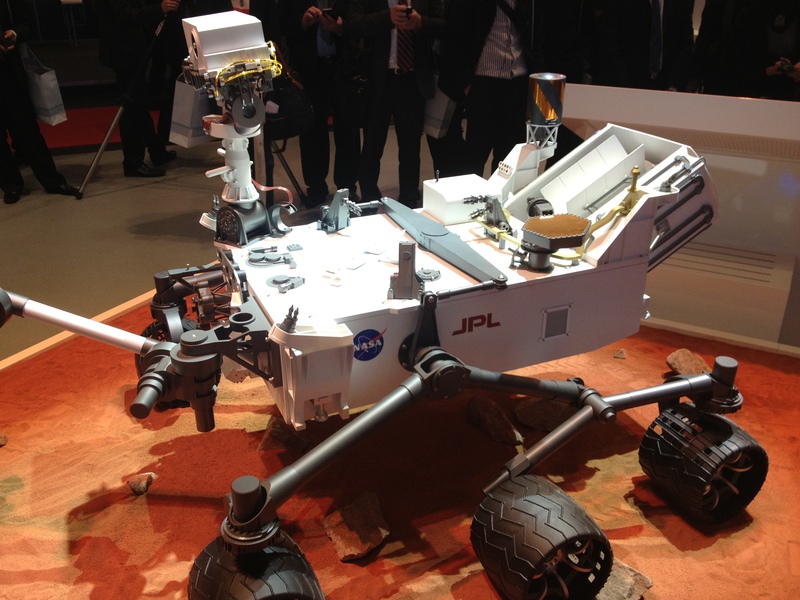Hannover Messe Impressions

Hello, Habr!
Our PeacockTeam team (GoodRoads) was lucky to be at the Hannover Messe, the world's largest industrial exhibition held in Hanover, Germany. The industrial theme may not be suitable for Habr, and we ourselves do not have a special relationship with industry, so the look at the exhibition will be somewhat general and will mainly concern Russian stands. Photos from this exhibition and our impressions under the cut.
The exhibition runs from April 7 to 11, and at this time the small, in general city of Hanover (population about 500 thousand people) is filled with many visitors. These days it is very difficult to find a free direct flight to Hanover even from Moscow, and hotel prices start at 200 euros per night. Until the last moment, we decided who could go to the exhibition, so we ordered everything on the last day. We ourselves from St. Petersburg did not find direct flights to Hanover, so we decided to take tickets to Hamburg, we rented a car there, flew to Hanover by German autobahn in 2 hours. We were very lucky with housing; instead of a hotel, we rented an apartment (moreover, 2 floors!), For only 49 euros per night, pretty close to the center, as it turned out later, the owner simply forgot that it was necessary to raise the price in connection with the exhibition.
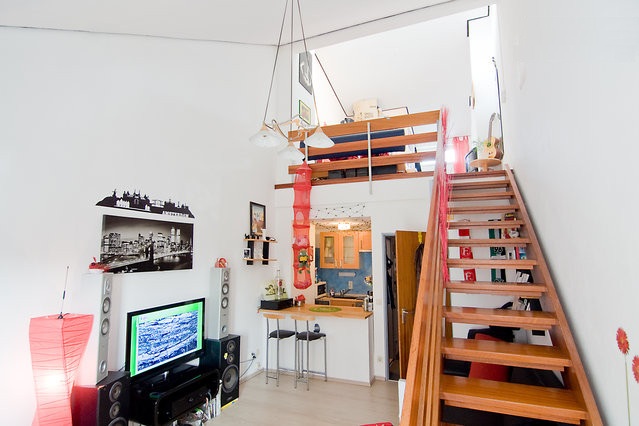

Preparations for the exhibition took a whole week, but we really had nothing to install - we used only two monitors for the demonstration, therefore we arrived the day before the opening, we quickly deployed it in a few hours. The next morning we went to the exhibition at the opening itself - by 9 am, and it would seem that we could not do without traffic jams at such an event, and they really were, but only in a small section before leaving the highway, passing this section of the stream he moved quite quickly, because the Germans had guessed in connection with such an event in the morning to organize traffic on Messe and the oncoming lane, a similar situation was in the evenings, when everyone was leaving. It would seem an obvious solution, but I have never encountered such a thing in our country.
The exhibition consists of 27 huge pavilions, between which supervise free electric cars and taxis, and also public buses are allowed into the territory of Messe. You can walk between the buildings for about 20 minutes, so the first time we unsuccessfully parked at the other end of Messe, and walked to our building.
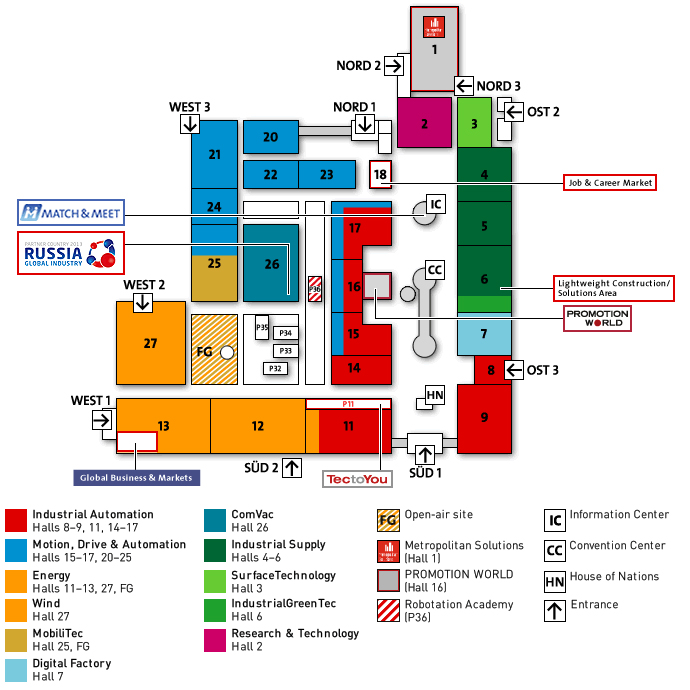
We were located - in the first building - Metropolitan Solutions, in which companies creating solutions for large cities were represented. As far as I understand, this complex was an initiative of Russia, which was a partner of the exhibition this year, as billboards located everywhere were repeatedly reminded. Therefore, for the most part, Russian companies were provided in this building - the Government of Moscow, St. Petersburg, the Ministry of Transport, Russian Railways, UralVagonZavod, etc. Apparently, in this regard, and also because this building is located on the very edge of Messe, it was not very crowded, unlike the rest of the exhibition.
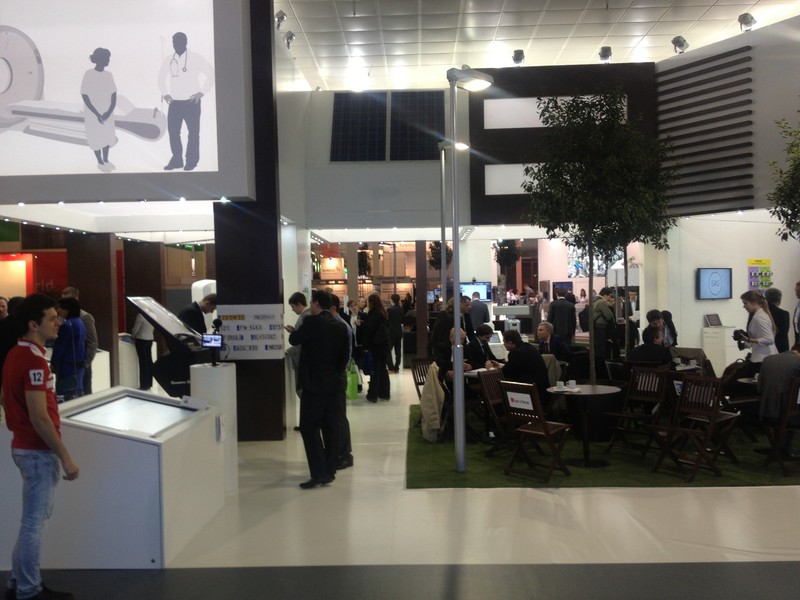
I’ll tell you more about the stand of the Moscow government, since it was they who invited us (despite the fact that we are the St. Petersburg team). The concept of the stand is “Smart” Moscow, which consists of 6 “smart” directions: transport, energy networks, a hospital, school, shop and office. The main attraction of the stand, which seems to have been spent on 80% of the budget, was a giant multi-touch screen composed of 40 panels interconnected, which depicted a map of Moscow that could be rotated, and a yellow emoticon appeared periodically that invited visitors to catch . Most of the photographs were taken next to him, especially girls who liked to take pictures there.
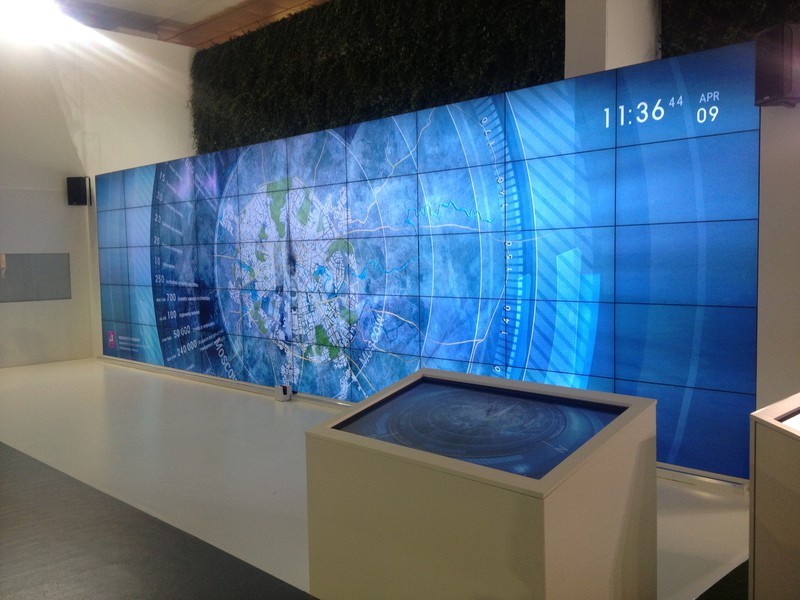
Among the projects presented at this stand were both interesting and rather mediocre. I'll start with the good one - the second most popular after the interactive panel was the model of the MagLev air-cushion train, as I understand it, guys make 3rd-generation semiconductors, and in Japan only the 2nd generation is used for such trains. There is a small road on the stand along which a toy train maneuvers, for which it is periodically watered with liquid nitrogen, it looks spectacular.
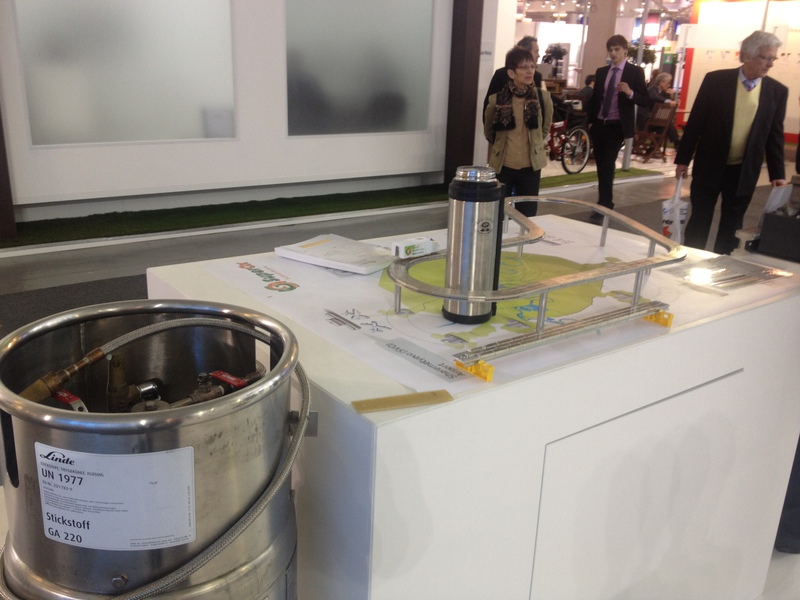
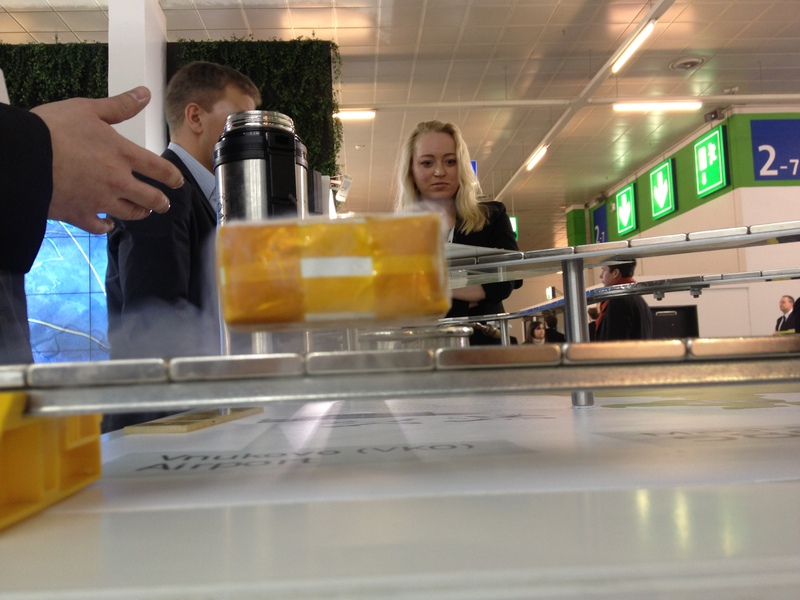
Also at the booth were 3D Builder - essentially a Russian 3D printer, real-time license plate recognition, sensors for open parking lots, searching for specific people by video recordings, and some others. Such projects as a smart school were a little disappointing, where they demonstrated flash games for schoolchildren, for example, how to cook borsch, and after all this project was most often shown to German schoolchildren attending the exhibition. “Smart” valves - allowing to close valves on gas pipes in automatic mode, without the use of people, it seems to me that only in our country could remain pipes that need to be closed manually within 40 minutes (judging by the story of the author of the project). “Smart” payment systems turned out to be just Russian-made terminals for payment by bank cards.

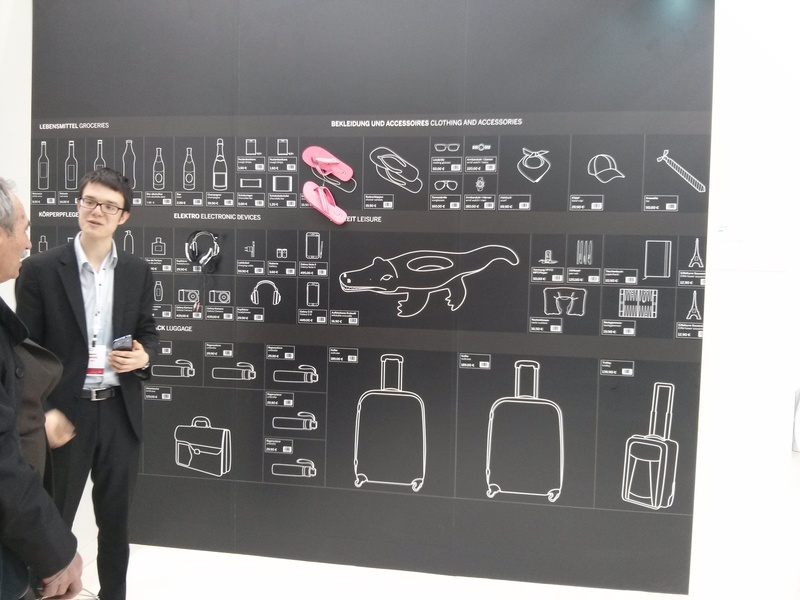
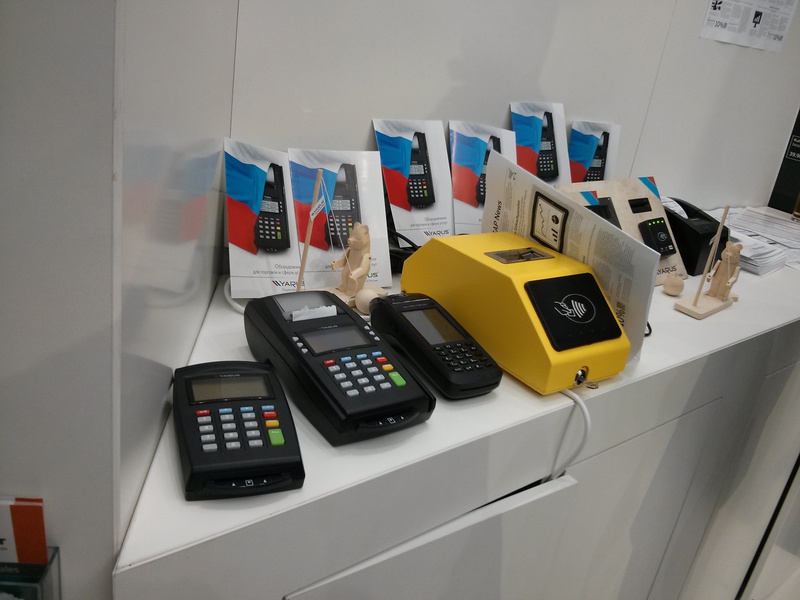

Our booth consisted of a road map from our website and presentation. Our team specializes in the processing and visualization of data coming from the sensors of mobile devices. Our projects are based on this - GoodRoads, automated monitoring of the quality of the road surface and GoodDrive - monitoring the driving style of motorists for insurance companies. Although we are not particularly related to industry, quite a lot of interested visitors came up to us.
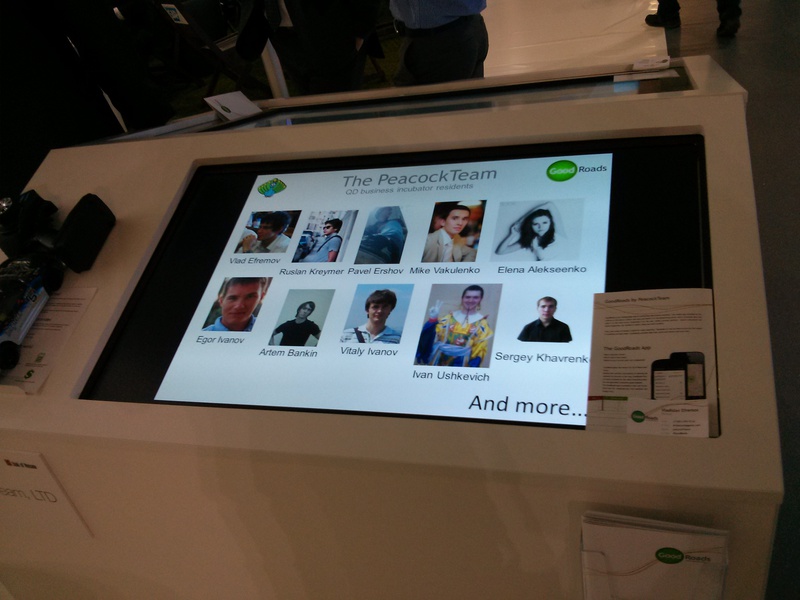
The booth participants were also given the opportunity to make their presentation on the big screen; there were very few listeners, unfortunately, as a rule, they were limited to the booth neighbors.

A little about other Russian stands:
The stand of St. Petersburg followed the concept of a safe city, to be honest, I did not quite understand what things are related to safety there, the stand presented light bulbs, LED lights, surveillance cameras, etc. For some reason, the information panel was in Russian, the impression was that they didn’t particularly expect that anyone other than our compatriots would fit there.

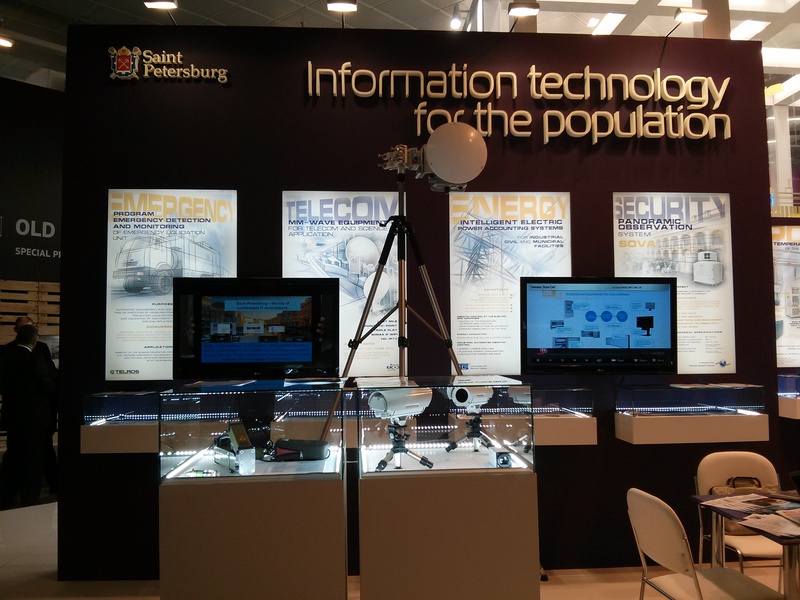
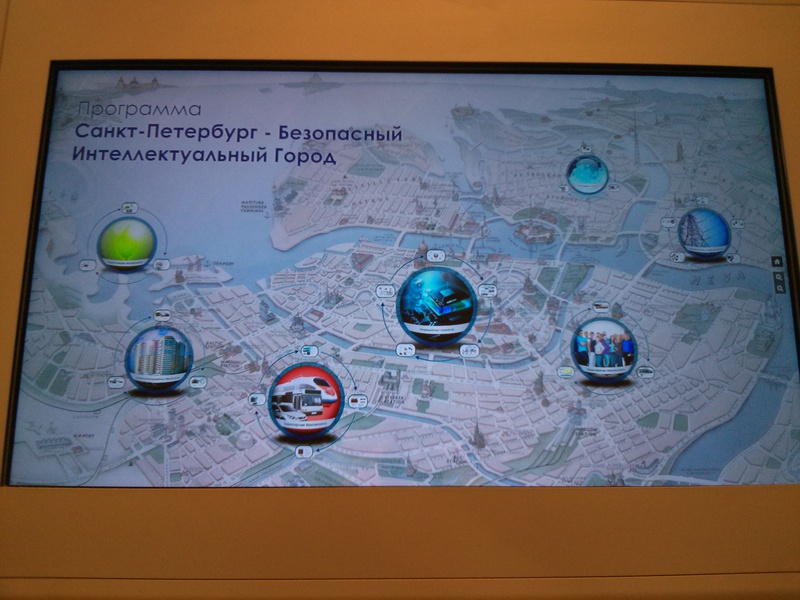
The apparatus that reads the aura by the hand and displays information about the state of a person’s chakras looked rather funny on the stand; for his work, he needed to feed him 100 rubles, which fortunately the developers of this complex gave out.
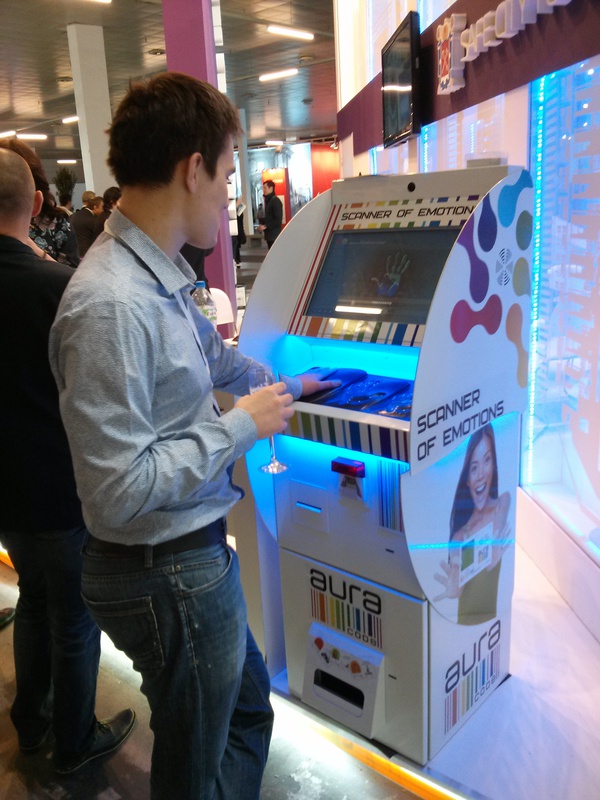
The Moscow region stand, which occupies about the same amount of space as the Moscow stand, boasted only two pretty girls sitting next to the monitor and smiling at the visitors.
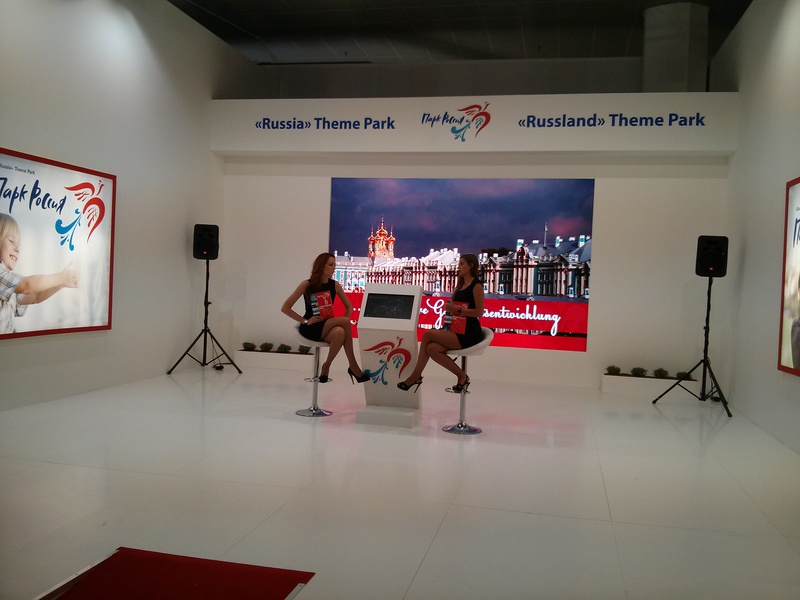
We really wanted to talk with someone from the bosses of the Ministry of Transport booth, because they are one of those organizations that are responsible for the condition of roads in Russia, but alas, after the first day of the exhibition, there was no one left there, only lovely girls and the model of the Murmansk transport hub .
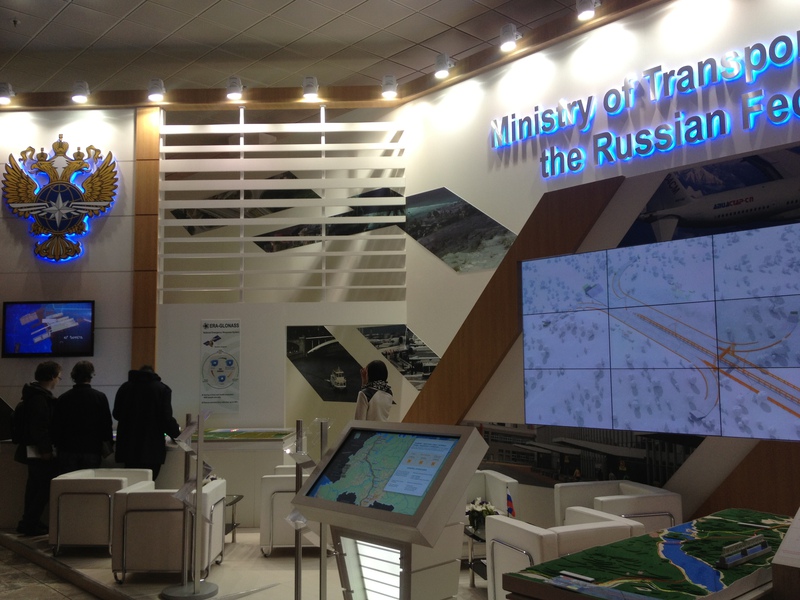
The UralVagonZavod stand was located in conjunction with the Bomabrdier stand, the main attraction of the stand was the concept of a new metro car with folding seats, this was done specifically for people in wheelchairs.
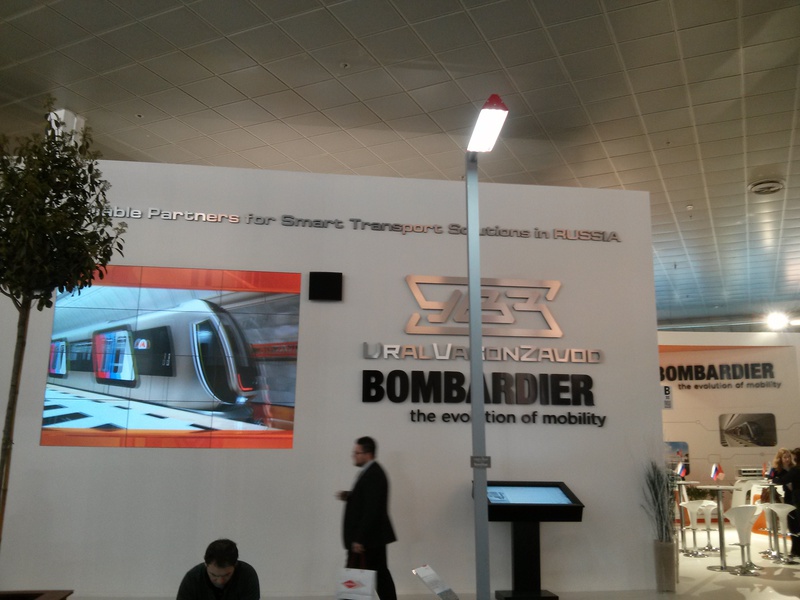

Against the background of Russian stands in the Metropolitan Solutions building, the Siemens stand stood out very much, it looked both simple, stylish and spectacular. The space on it was distributed very functionally. Real technological objects were presented - industrial switches, equipment for power grids, electric motors and their parts, and monitors in the format of presentations and videos showing really functioning objects - hydroelectric power stations, wind generators and more. Siemens stands were found in almost every exhibition building.
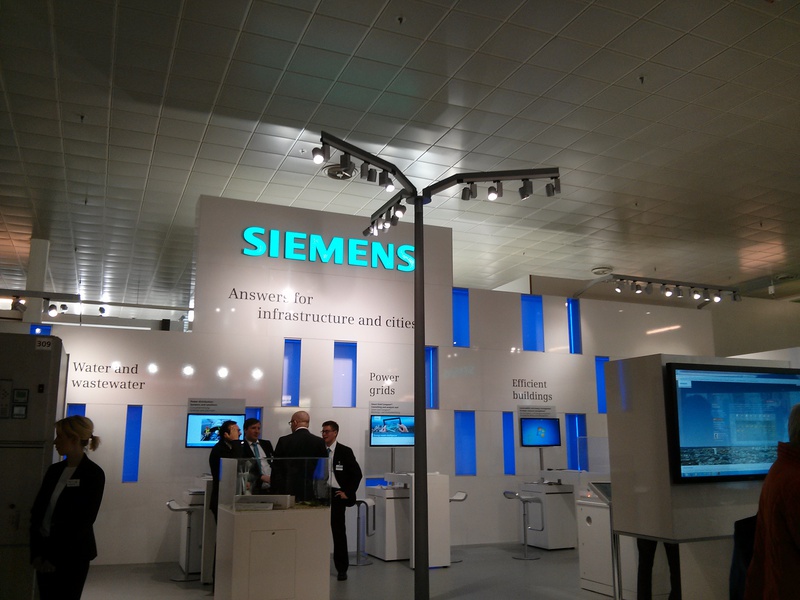

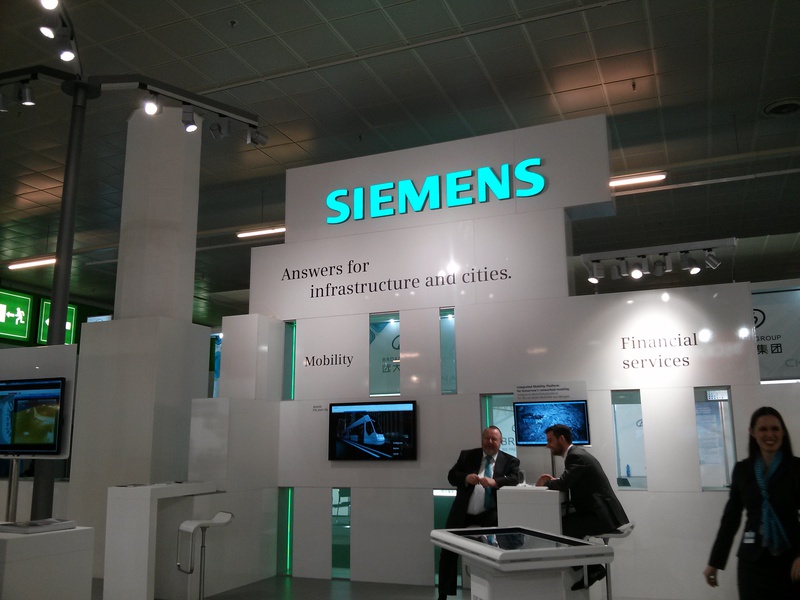
The neighboring building housed the stands of the Ministry of Education of Russia. It was exhibited, some universities related to industry, the university stand was its description in English. In the common part of the stand, a quadrocopter, a 3D printer and a racing car were presented.

In the 26th building, the main stand of Russia was located, it was the president of Russia who visited it. In addition to the actions of the feminists, one could meet protesters chanting Putin - not legetim.
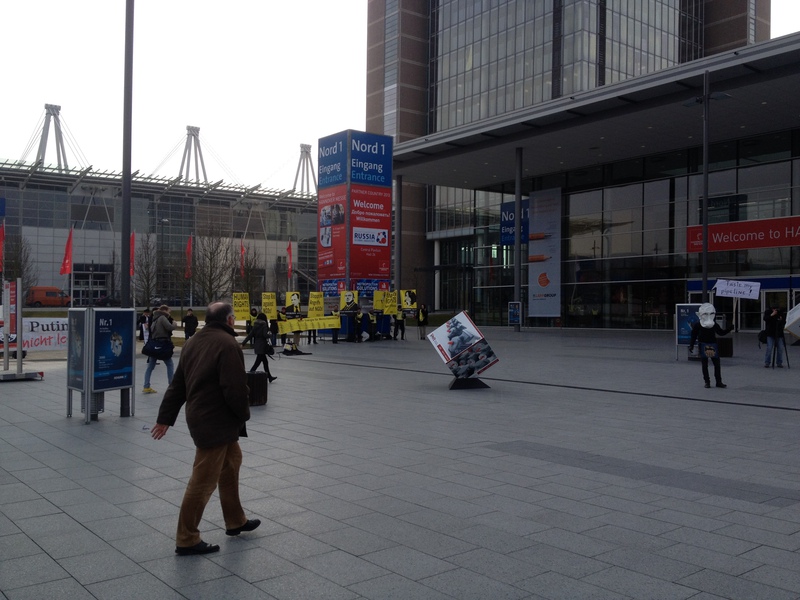
I was somewhat surprised at the contents of the stand, who would have thought that the main exhibit at the Russian stand will be cars, and “supercars”. It is not very clear who is the creator of these concepts, and why they are exhibited there, but as I understand it, they exhibited in order to demonstrate Russian design solutions in the auto industry. The second supercar is shown in the first picture.

In the evenings, all the Russian participants of the exhibition gathered at the stand of Russia, and everyone who was somehow connected with Russia treated them to pancakes with caviar and played music. On Wednesday, when we were leaving, someone there even decided to celebrate their birthday. Most of all, these receptions were similar to the events of the “Russian House” at major sporting events.
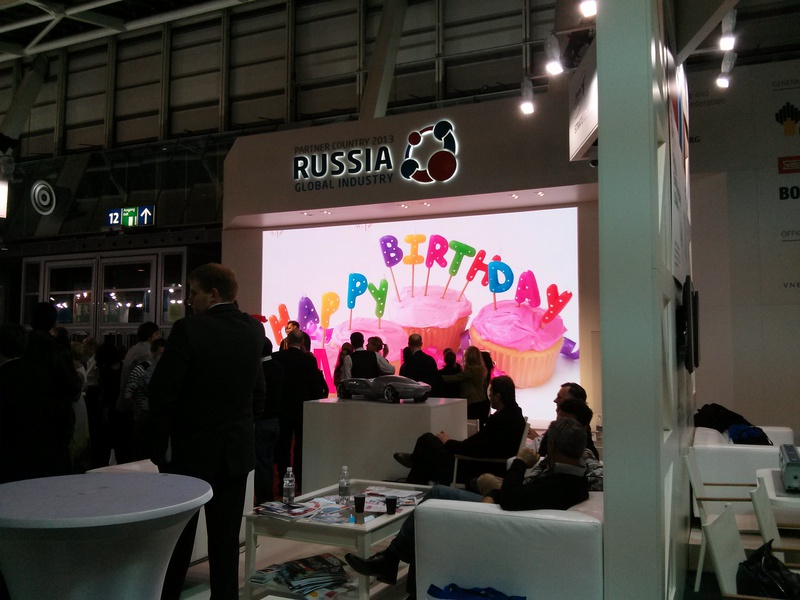
This concludes the review of Russian expositions, between the case there were stands of ExpoForum, Kaspersky, but the stands are unremarkable, yet this is not a target exhibition for them. The overall impression of the exhibition is positive, you can find a lot of interesting things on it, especially for those who really have a relationship with industry. In my opinion, against the background of the rest of the stands, the Russians looked rather boring, lacked some interesting advanced technologies, and tried to leave only at the expense of beautiful cars / girls, etc.
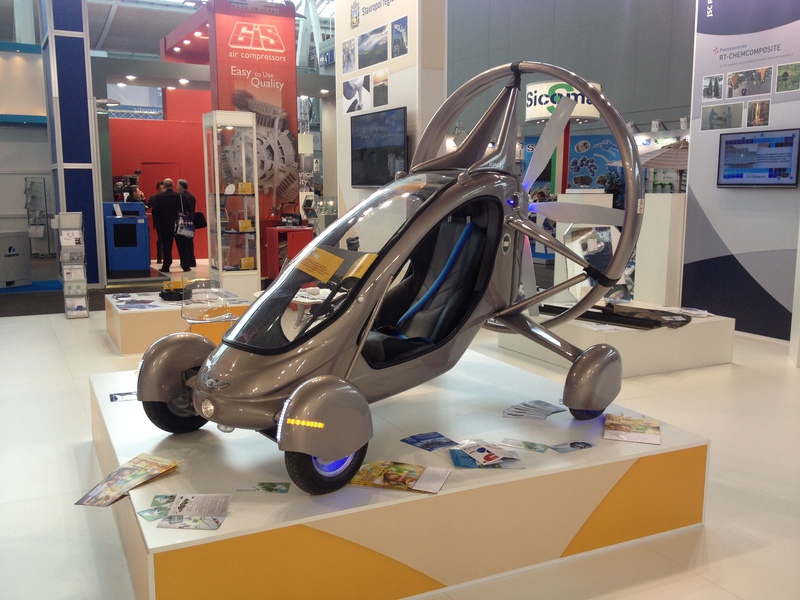
Next, lay out some more photos from the exhibition.
drawing robot

the funniest way to demonstrate a robotic arm
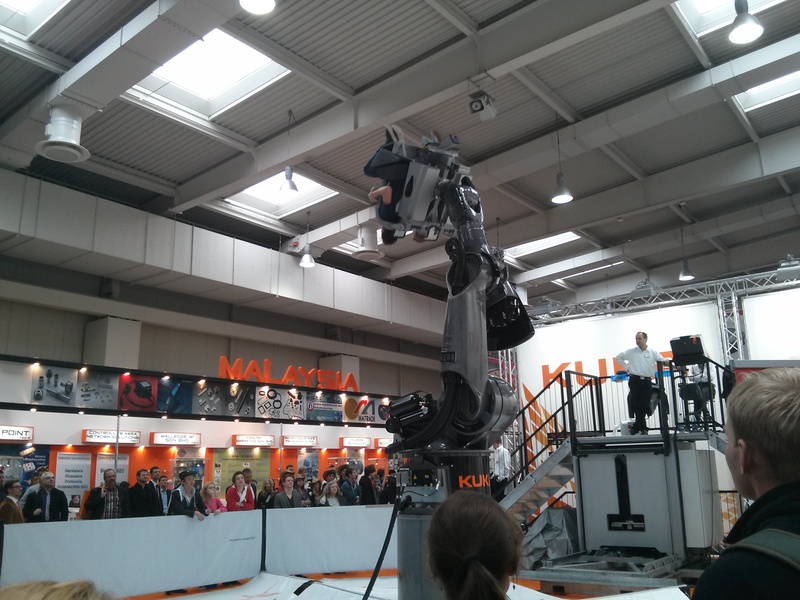
Dell stand, next to NVidia

Tesla - sports electric cars
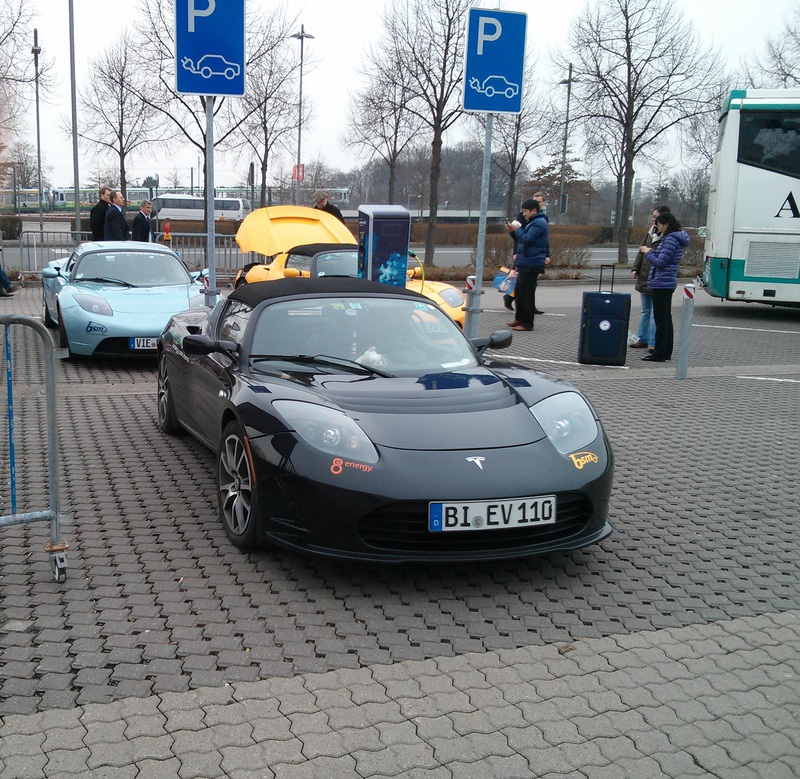
ski lift

mechanical octopuses

car pickup panoramas streets
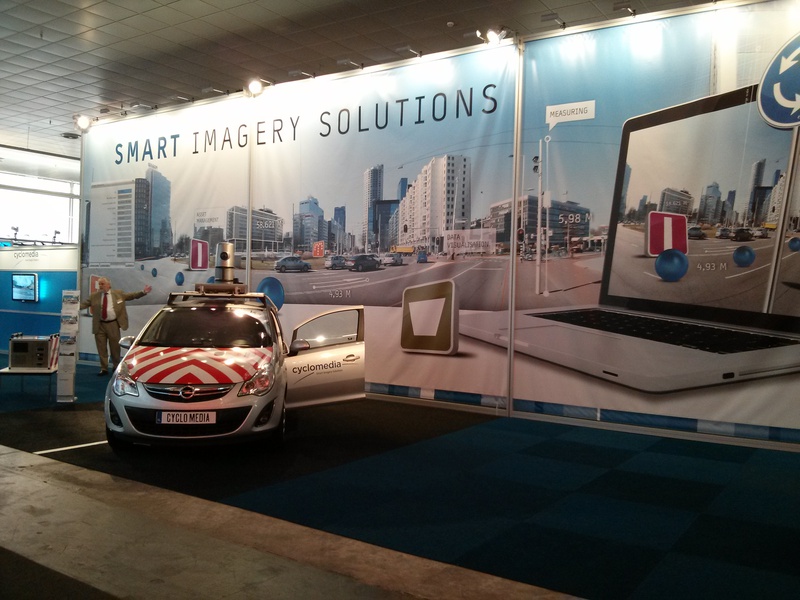
outside view
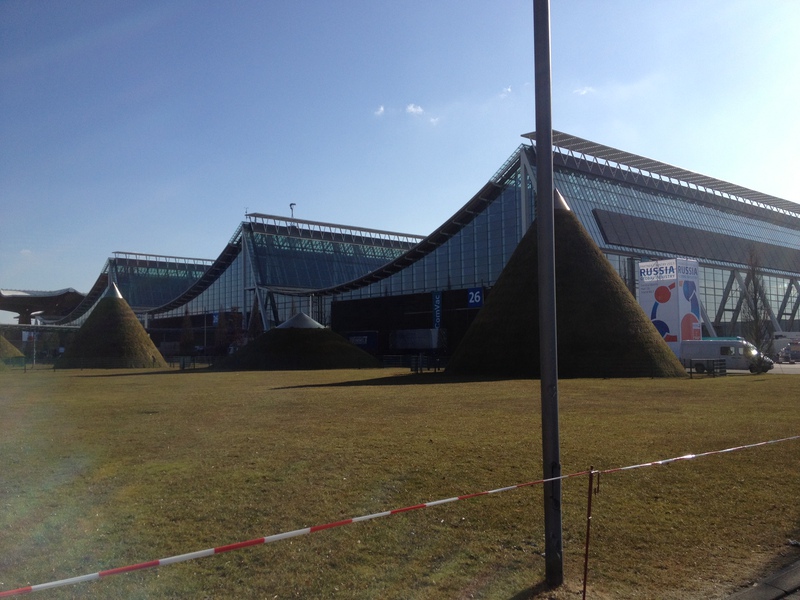
rover
